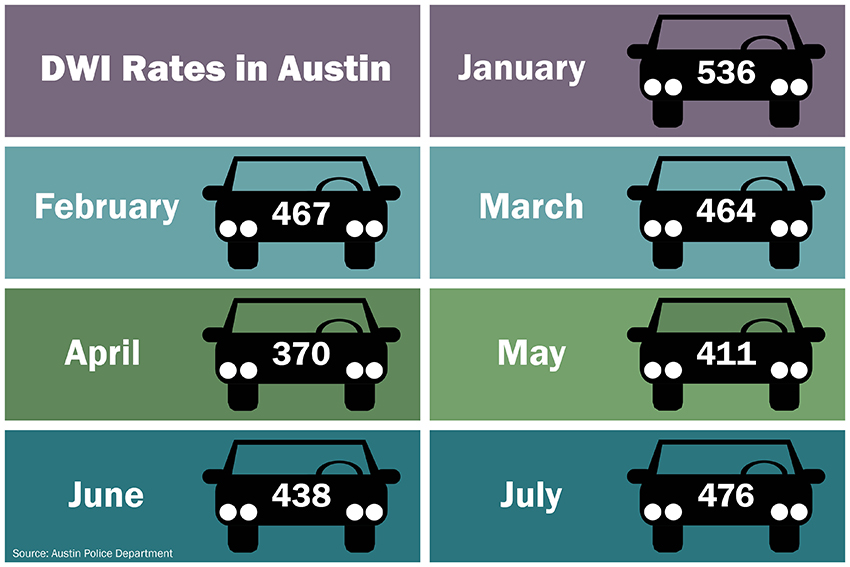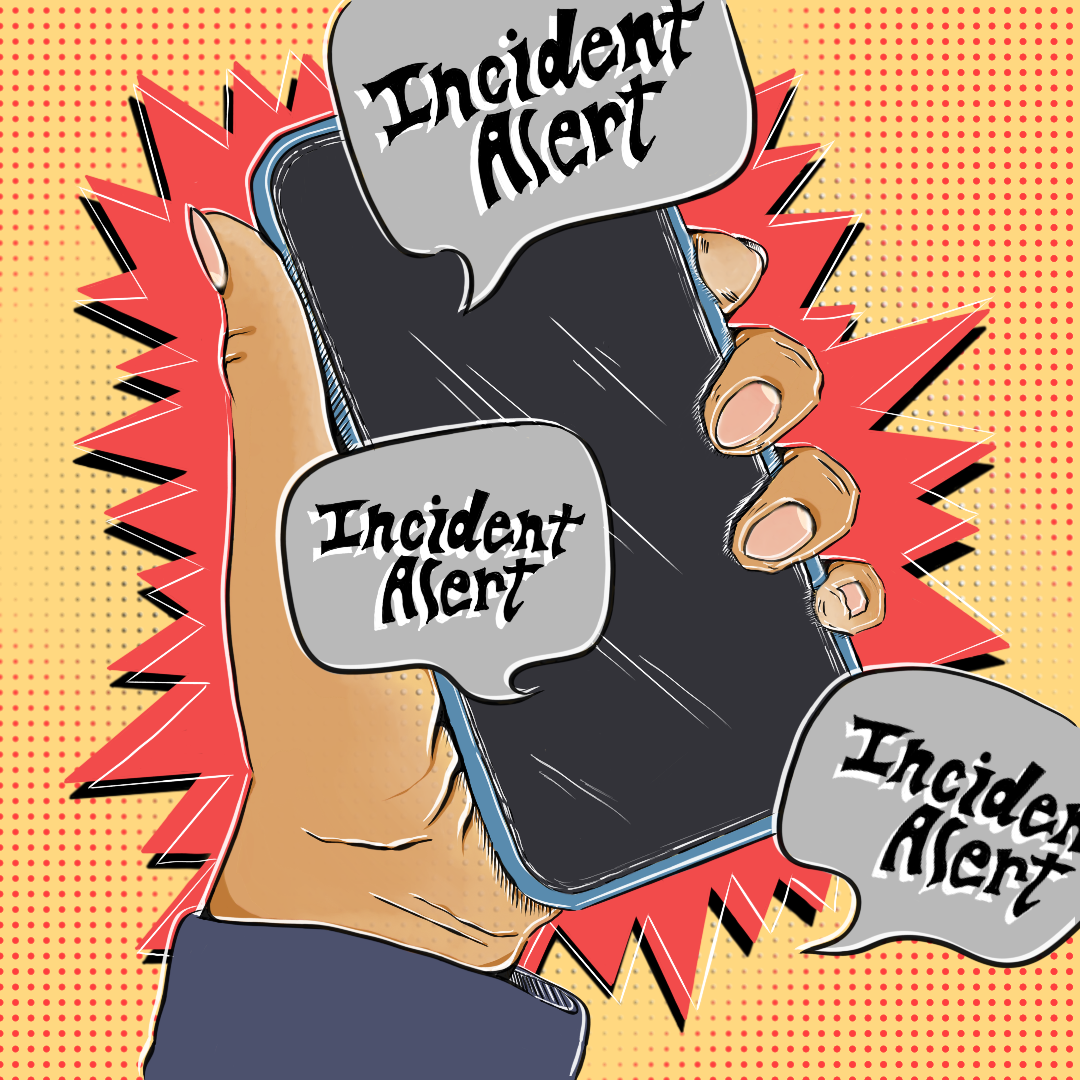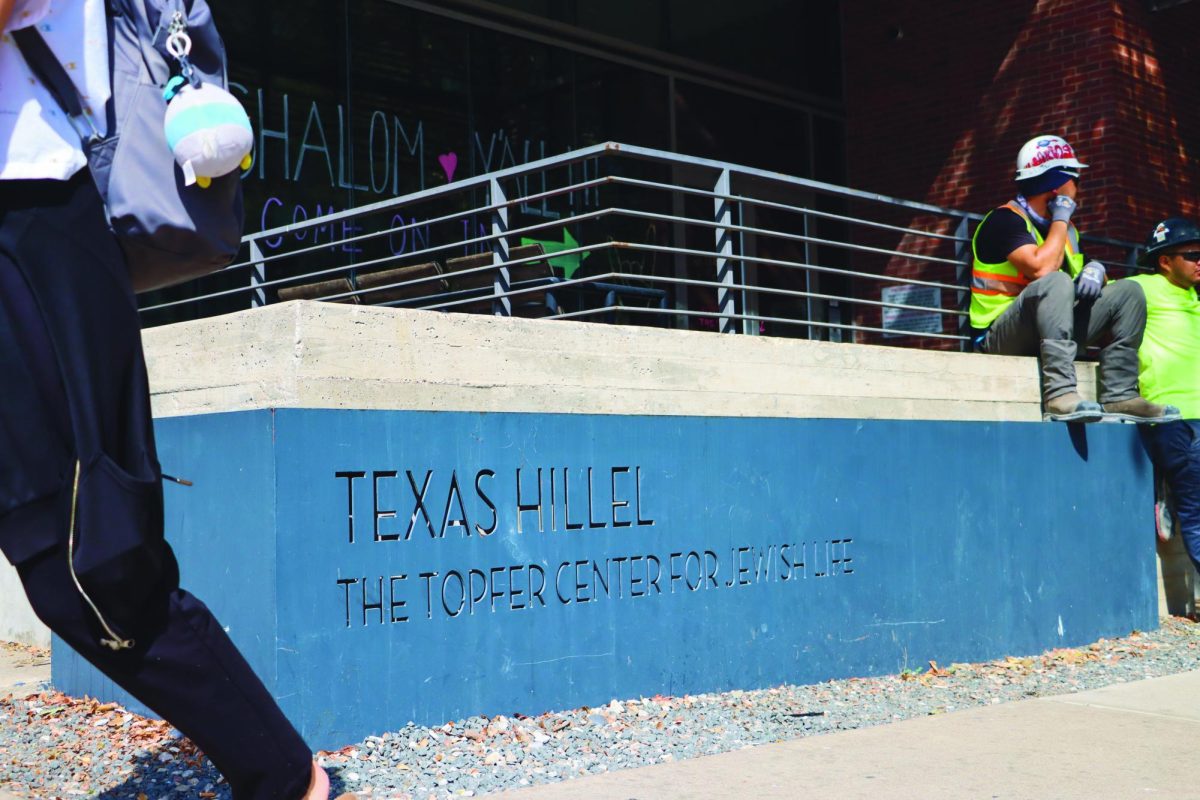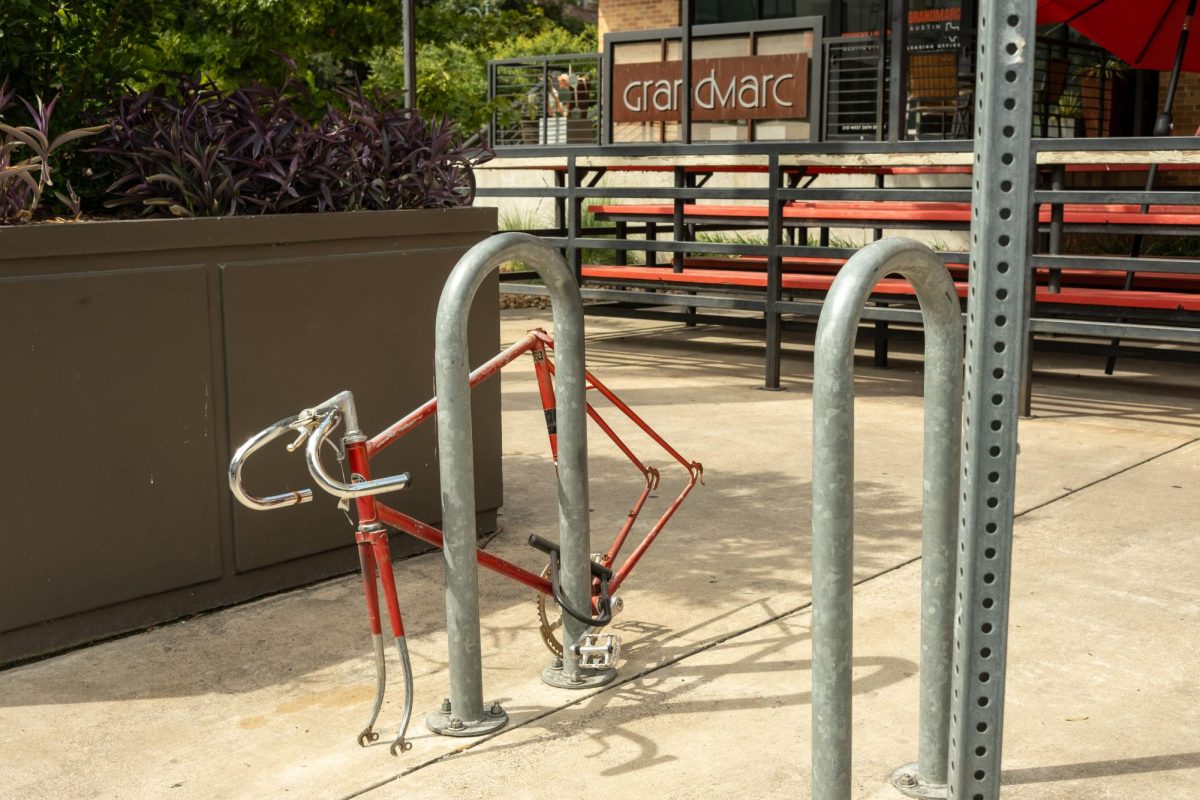Driving while intoxicated incidents have steadily increased since the ride-hailing services Uber and Lyft left Austin in May.
On May 9, just days after a ballot measure in support of the ride-hailing companies failed in Austin, Uber and Lyft ceased their services in the city. Passage of the law would have overturned previous City Council resolutions imposing regulations such as city-run fingerprint background checks.
Ride-hailing companies Lyft and Uber arrived in Austin in 2014. From May 2013 to May 2014, the Austin Police Department reported an average of 525 DWIs each month. One year later, the average of DWIs in the city had gone down 5 percent, with 500 incidents per month. In the following year, from May 2015 to May 2016, DWIs decreased an additional 12 percent, with an average 438 incidents per month.
In the month after Uber and Lyft’s departure on May 9, APD reported 358 DWI incidents. The average number of DWI incidents per month has increased 4 percent in the summer months following the ballot decision, with 438 incidents occurring in June and 476 incidents occurring in July.
Advocates of these ride-hailing companies continually cited this “public service” when arguing in favor of Proposition 1 — arguing that ride-hailing companies, which many have called the “drunk taxicabs” of Austin,
serve to decrease DWI rates in the city.
“Everything here that is fun involves getting drunk in some way,” said Mason Tate, a 25-year-old student at Austin Community College who drove for Uber and Lyft in the months leading up to their departure. “Picking up people at night was like shooting fish in a barrel. It seemed like we were really helping a lot of people [get to and from clubs] safely.”
Despite the absence of Uber and Lyft in Austin, other ride-hailing services are still available in the city, including Ride Austin, Fare, Wingz, InstaRyde, Fasten, zTrip and Get Me, many of which are still in their startup phases. However, ridership of these services is still lacking in comparison to Uber and Lyft.
Get Me, which agreed to comply with city regulations before the ballot vote, had 500 drivers in early spring but increased by nearly 4,500 drivers in the 48 hours following Uber and Lyft’s departure, KXAN reported. In comparison, Uber and Lyft each had about 10,000 drivers at the time of their departure, according to CNBC.
APD, however, did not provide any information as to whether the absence of Uber and Lyft was the cause of this increase in incidents.
“Anytime we experience an increase in DWI, it is cause for concern,” APD said in a statement to KEYE TV when asked about an increase in DWI rates for this month.
Former Uber and Lyft drivers, however, are convinced the absence of ride-hailing companies is to blame for this spike in rates.
“Legally, probably everyone that I picked up at night was not able to drive,” said 33-year-old Joshua Cheatham, who drove for both Uber and Lyft while he was a student at Austin Community College in 2015. “I rode them before I drove [for] them when I would go out and drink, and it really served the public interest. Jail and death were easily avoided … and the app was convenient and easy. It was a win-win for the city, the drivers and the riders.”
With uncertainty still surrounding the future of these services in Austin, many students have expressed concern about drunk driving in their extended absence.
“Most students are probably going to end up going out anyways,” international relations freshman Shazur Jafferali said. “Uber and Lyft just gave people that sense of safety [despite] Austin’s crazy driving.”





















